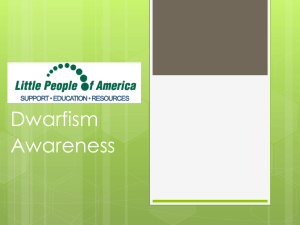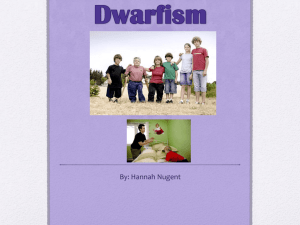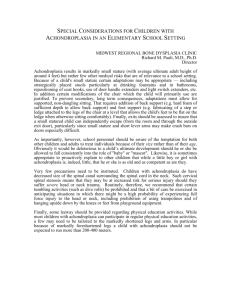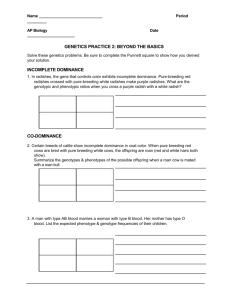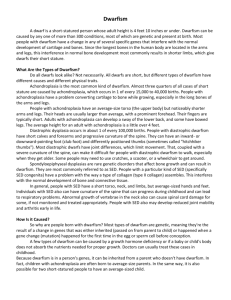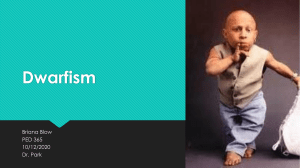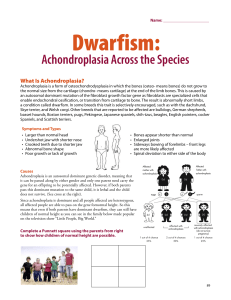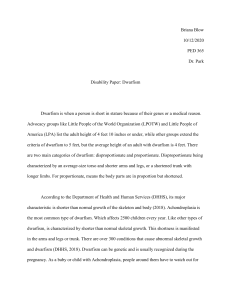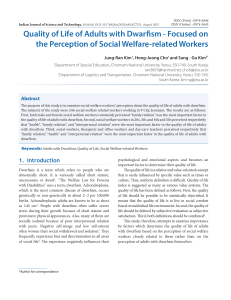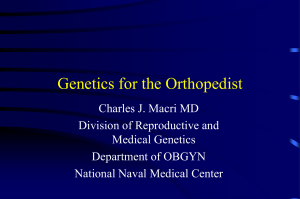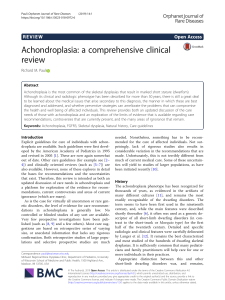Dwarfism - About Manchester
advertisement
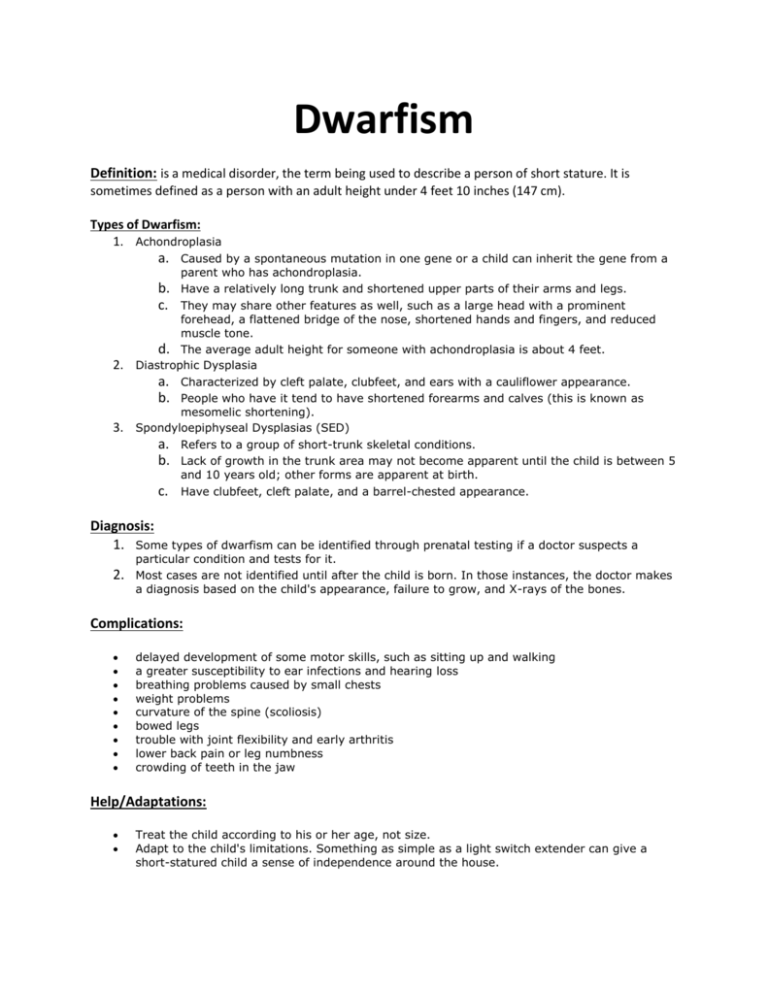
Dwarfism Definition: is a medical disorder, the term being used to describe a person of short stature. It is sometimes defined as a person with an adult height under 4 feet 10 inches (147 cm). Types of Dwarfism: 1. Achondroplasia Caused by a spontaneous mutation in one gene or a child can inherit the gene from a parent who has achondroplasia. b. Have a relatively long trunk and shortened upper parts of their arms and legs. c. They may share other features as well, such as a large head with a prominent forehead, a flattened bridge of the nose, shortened hands and fingers, and reduced muscle tone. d. The average adult height for someone with achondroplasia is about 4 feet. Diastrophic Dysplasia a. Characterized by cleft palate, clubfeet, and ears with a cauliflower appearance. b. People who have it tend to have shortened forearms and calves (this is known as mesomelic shortening). Spondyloepiphyseal Dysplasias (SED) a. Refers to a group of short-trunk skeletal conditions. b. Lack of growth in the trunk area may not become apparent until the child is between 5 and 10 years old; other forms are apparent at birth. c. Have clubfeet, cleft palate, and a barrel-chested appearance. a. 2. 3. Diagnosis: 1. Some types of dwarfism can be identified through prenatal testing if a doctor suspects a 2. particular condition and tests for it. Most cases are not identified until after the child is born. In those instances, the doctor makes a diagnosis based on the child's appearance, failure to grow, and X-rays of the bones. Complications: delayed development of some motor skills, such as sitting up and walking a greater susceptibility to ear infections and hearing loss breathing problems caused by small chests weight problems curvature of the spine (scoliosis) bowed legs trouble with joint flexibility and early arthritis lower back pain or leg numbness crowding of teeth in the jaw Help/Adaptations: Treat the child according to his or her age, not size. Adapt to the child's limitations. Something as simple as a light switch extender can give a short-statured child a sense of independence around the house. Present the child's condition — both to the child and to others — as a difference rather than a hindrance. Your attitude and expectations can have a significant influence on the child's selfesteem. If the child is teased at school, don't overlook it. Talk to teachers and administrators to make sure the child is getting the support he or she needs. Encourage the child to find a hobby or activity to enjoy.. Finally, get involved with support associations like the Little People of America. Getting to know other people with dwarfism — both as peers and mentors — can show your child just how much he or she can achieve.
